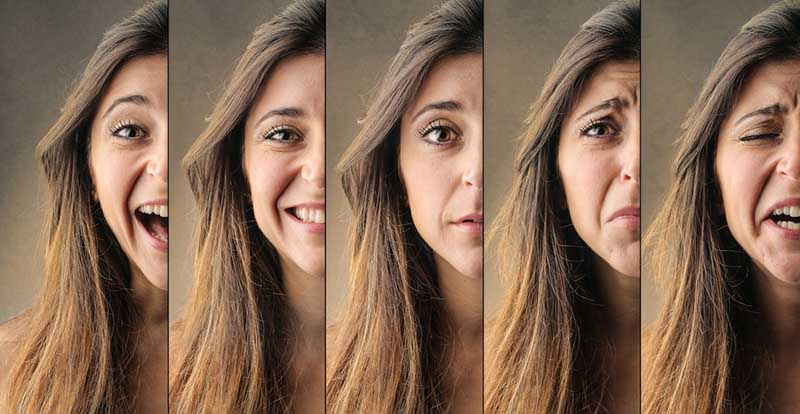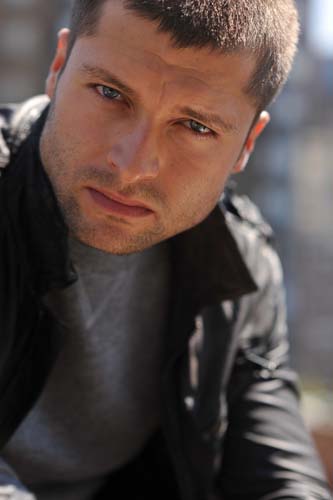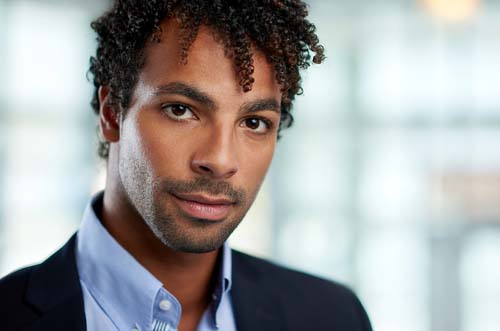 Acting headshots are one of the key marketing tools for aspiring thespians. It’s important to get a set of at least cheap headshots done the minute you decide to pursue acting and start applying on casting websites. Snapshots are largely looked down upon, and will make you look unprofessional, so steer clear of having your friend take your “headshot” with an iPhone.
Acting headshots are one of the key marketing tools for aspiring thespians. It’s important to get a set of at least cheap headshots done the minute you decide to pursue acting and start applying on casting websites. Snapshots are largely looked down upon, and will make you look unprofessional, so steer clear of having your friend take your “headshot” with an iPhone.
Your acting headshot will be the first thing a casting director will look at when going through submissions. If the headshot catches the CD’s attention, you’ve already passed the first stage; the next stage is to impress the CD with your acting CV/resume and demo reel. Actors with “weak” resumes can still have a significantly hire chance to get an audition if they have an outstanding headshot.
Agents and top casting directors pay close attention to how professional an acting headshot looks, and it can tell them how well the actor understands the industry (read: is the actor an amateur?) That said, the topic of acting headshots can be confusing to budding actors just entering the industry:
- What exactly are headshots for actors, and how they differ from portraits or snapshots?
- What’s the standard size of an acting headshot in the UK and in the US?
- Should my headshot be color, black and white, or both?
- Is landscape headshot better or worse than a vertical one?
In this article on acting headshots, I’ll have these and other questions answered for both the UK and the US industries. There’s no doubt that a good set of headshots can make your career, since casting directors and talent agencies love actors who have acting headshots that stand out, or how they say, “that pop.”
RELATED: Acting With No Experience (256-page acting beginner’s guide)
If you choose to go to one of the best headshot photographers in London, or Los Angeles, or New York, it’s likely they will give you all the details you need to know. If top and most expensive photographers aren’t in your budget yet, and you choose to get a set of cheap acting headshots (we all start there), then you’ll need to know more about them.
Acting Headshots 101
8 Things Every Actor Must Know
1. What’s an Acting Headshot and Why You Need It
It’s very likely you already know that acting headshots, or simply “headshots”, is a photograph of a person/actor from the chest up, with the focus on their head. In the acting business, a headshot is usually known to be a quality photograph taken by a professional photographer, which is not the same as your usual snapshot.
Headshot is a number one actor’s marketing tool. There are many reasons to invest in a set of good quality headshots done by a professional headshot photographer. Headshots are actors’ branding and marketing around the industry; it’s the key toward getting noticed for the audition, and the best way for an agent or CD to remember the actor for future work.
As previously stated, headshot is the first thing talent agents and casting directors will look at. Only if you fit the part based on your looks will they look at your resume and show reel.
Since there’s very little you can do about the way you look, the aim here is to have the most professional lookingheadshotpossible. You would be surprised how easily experienced industry people spot cheap photographs and how quickly they are put off. Your aim here is to avoid having your submission thrown into the trash bin right away.
2. What Are the Standards for Headshots
When it comes to actors’ photographs, it’s all very strict (especially when using color headshots). You and I might not understand every single photography-based technicality that makes headshots look great, but casting directors who see hundreds of them every day love photographs that speak to them and tell the “actor’s story” just from the headshot alone.
This industry has its standards and we must follow them. In this case, the US and the UK markets were different in a few regards when it comes to headshots, but they are slowly blending together (that is the UK industry is catching up with the modern standards of the US).
The key takeaway is to study exactly what the standard acting headshots are in your country’s market, and follow those standards to a letter. This is not the time to be creative, weird and different. All that will do for you is have your headshot thrown into the trash bin because it would be clear to the CD or agent that you’re not up to date on the industry standards.
3. Size and Layout of Headshots
Normally, an actor’s headshot is an 8″ by 10″ (8×10) photograph. This is the standard size for the industry in the UK and the US. Never use a headshot that’s smaller or bigger in size.
A headshot photographer will usually take the photograph in both the landscape/horizontal position and the portrait/vertical position. Both are totally acceptable, and neither is superior to the other. However, there’s one disadvantage of landscape headshots: they are more difficult to use in your online profiles that scale every photo you upload.
It’s good to have both in your arsenal, but I would also recommend to ask the headshot photographer to prioritize portrait/vertical headshots first (so you have more of these shots over landscape).
Let’s take a look at two examples, the landscape and the portrait acting headshots. The below two are good headshots that fit industry strandards:
And here’s a very bad headshot that would make the casting director or agent cringe, see if you can tell the difference:
There are many problems with the above acting headshot: bad lighting, bad cropping, bad background, shadow on the left, the head is turned to the side, etc. Ultimately, the headshot looks more like a highschool yearbook portrait than a professional industry standard headshot.
4. Color of Headshots
Just a few years ago, UK actors market was still dominated by the black & white headshots. However, every year British casting directors and talent agents are more open to color headshots, which is why we see more of them on casting and personal websites.
Today in the UK you can apply for a job with both black & white and color headshots, unless specified which one is required. In fact, I would say color headshots are now more preferred (unless you’re dealing with a very old-school casting director/agent). In the US, black & white acting headshots are completely unacceptable and are considered outdated.
5. Keeping Headshots Up to Date
Every actor has to make sure that their headshots are up to date, which means that the actor himself must look exactly like the person in the photograph. Casting directors or talent agents don’t want to invite a person with long hair and see a shaven head in the audition. This will likely ruin your relationship with the CD and you won’t be invited to their office ever again.
Whenever you change your style, looks, type or haircut, get a face tattoo – your headshot must be updated to reflect your current look. It’s a standard practice and making a mistake of not following such rules might put you in casting director’s or agent’s “blacklist.” Not that such a thing exist, but they do remember poor experiences with unprofessional actors.
What if you want to grow your hair out, or cut it short? If that’s the case, then you’ll have to keep getting your acting headshots done approximately every 6 months as your hair keeps getting longer. You may get invited to audition specifically because of the type of haircut you have, and if it’s different when you come in the room, that’s unprofessional.
6. How to Send Headshots to CDs and Agents
If you’re not applying for acting jobs or talent agencies online (by submitting through their websites, or on casting call websites), then it’s likely you’re sending your actor’s marketing package through snail mail (regular post). In these cases, which in the UK are still most common (whereas in the US, online submissions are taking over), there are a few standards to follow.
The common practice that actors use is they staple their 8×10 vertical/portrait headshot to their A4 single page acting resume, back-to-back. It’s a smart way to ensure your headshot always travels alongside your resume and doesn’t get lost. It’s also easier to hand these over to industry people, instead of scrambling for both separately.
Don’t waste your money on “clear” envelopes that will expose your headshot without even opening it. While some people out there recommend this, other agents say that it’s actually making them less likely to open the package and look at the resume. Stick to regular envelopes that will comfortably fit your A4 resume with a stapled headshot.
Always send just one resume + headshot, and a cover letter. Do not include anything else. If you have an actor’s business card, you can staple that to the left corner of the resume/headshot combo, but it’s unnecessary.
7. How to Take Good Headshots
Whenever you’re being photographed for your headshot, there are quite a few things to keep in mind to make them stand out but also not make it look “unreal.” Remember, you’re trying to show your real self and how you look in real life; this is not for your modeling portfolio, which means you don’t have to look the best you possibly can, but rather look natural.
A few key points to keep in mind when getting your acting headshots:
- Make-up is recommended for both men and women (just enough to cover imperfections, but not too much).
- Absolutely no piercing in the ears, nose, eyebrows or wherever else you normally have it.
- No other accessories (e.g. necklaces, jewelry, hats, etc.) other than glasses, if you normally wear them.
- If you do wear glasses, take some headshots with them, and some without (even if you can’t see without them).
- No “busy” clothing: colorful and many different patterns on the t-shirt, etc. Plain color is best.
The same goes for your haircuts. Both men and women should avoid haircuts that attract a lot of attention; you want all the focus to be on your face. Remember, this picture is not for a modeling competitions — this is a completely different kind of market. Most new actors have difficulty understanding that in the beginning, so keep your haircut neat but regular.
While no strong enhancements are needed, this is not to say you should “be sloppy” and take pictures with cookie crumbs on your face. Just keep it simple, and maintain your hair, looks and regular hygiene for the day of the shoot and the day of audition. Think of how you’d look if you’re going for a job interview: just look fresh and clean.
8. How Much do Headshots Cost?
 The prices for headshots vary based on the market you’re in. London, New York City and Los Angeles – the big three – have similar costs of acting headshots. There are three “general categories” in affordability – cheap, average and expensive – and they all correlate to how professional a headshot will look like.
The prices for headshots vary based on the market you’re in. London, New York City and Los Angeles – the big three – have similar costs of acting headshots. There are three “general categories” in affordability – cheap, average and expensive – and they all correlate to how professional a headshot will look like.
Paul Valentino from Acting Plan has done a review of his experience on getting a headshot in this article, so I recommend you read it.
The prices you’ll see around London will be in this range:
Cheap headshots: £90
Average headshots: £150-£350
Professional headshots: £350-£800
Overpriced: £800+
Anything below the “cheap headshots” price is likely not worth your time, and anything above the “professional headshot” price tag is likely not worth the asking price, unless it’s for a much larger amount of looks, length of the shoot, and other perks.
Even though professional headshots are usually worth the cost (more often than not), sometimes it’s just the name of the photographer that raises the price tag. So always review their portfolio and see how their shots look like, and compare each one of your favorite photographers.
Also, pay close attention whether the photographer has taken any headshots of people that are similar to your type in terms of looks. This is the most important part, because some photographers are better at bringing out the best in males with black hair while others are better at making women with blond hair look natural and “pop out” on their headshots. It depends.
Generally, the acting headshot costs will depend on several factors:
- How well known and experienced a photographer is
- The length of the photoshoot
- How many shots/images you’re getting out of it
- Whether or not you’re using a make-up person
- Do you headshots need retouching (most often, they do)
- Number of looks you’re going for
There’s a lot to consider when it comes to acting headshot costs, so it’s best to prepare a list of headshot photographers that you like, and contact each one of them and ask the right questions. Think about how much you can afford and go from there.
READ NEXT: 15 Places To Print Your Headshots In London








